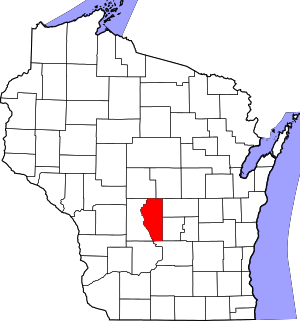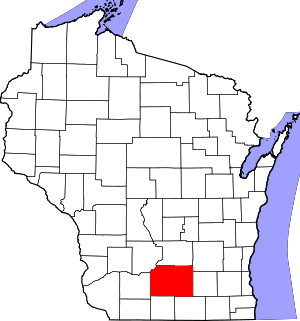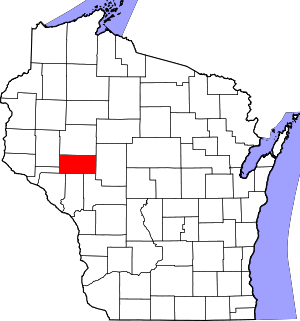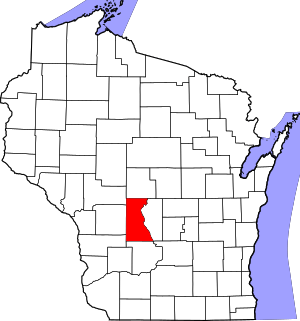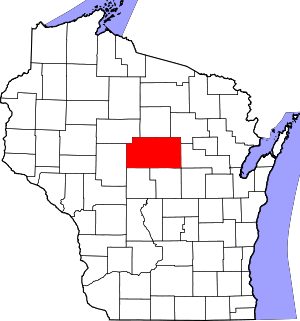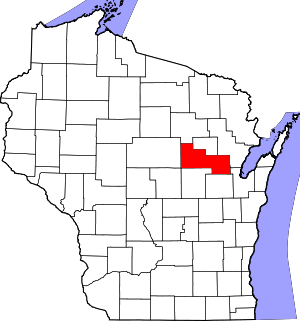Ho-Chunk Nation of Wisconsin
The Ho-Chunk Nation (Hocąk) has traditional territory located across five states in the United States: Wisconsin, Illinois, Iowa, Minnesota, and Missouri. The term Winnebago was widely adopted by the surrounding Algonquin tribes as well as by the French, although the Ho-Chunk Nation have always called themselves Ho-Chunk. The other federally recognized tribe is the Winnebago Tribe of Nebraska. The tribe separated when its members were forcibly relocated first to an eastern part of Iowa known as the Neutral Ground, then to Minnesota, South Dakota and later to the current reservation in Nebraska [4] The name Ho-Chunk comes from the word Hocaagra (Ho meaning "voice", cąk meaning "sacred", ra being a definitive article) meaning "People of the Sacred Voice"[3]
| Total population | |
|---|---|
| 6,563 in 2010[1] | |
| Regions with significant populations | |
| Languages | |
| English, Ho-Chunk[2] | |
| Religion | |
| Waaksik Wosga, Native American Church[3] | |
| Related ethnic groups | |
| other Ho-Chunk, Otoe, Iowa people, and Missouria[3] |
Land base
The Ho-Chunk Nation is considered a "non-reservation" tribe with many tribal members who privately own their own land, and the tribe stewards and maintains parcels of land placed in Trust as Indian Trust Land as designated by the federal government, Secretary of the Interior and Bureau of Indian Affairs (BIA) spread over Adams, Clark, Crawford, Dane, Eau Claire, Jackson, Juneau, La Crosse, Marathon, Monroe, Rock, Sauk, Shawano, Vernon, and Wood counties, Wisconsin[5]. In 1990, the land designated as trust land was 4,200 acres (17 km2) in size.[6]
Government
The Ho-Chunk Nation is headquartered in Black River Falls, Wisconsin.[7] With the adoption of its most recent constitution in 1994, which restored the tribe's name from the Wisconsin Winnebago back to its own name for itself, the Ho-Chunk Nation, the modern tribal government structured itself after the federal and state governments, with executive, legislative and judicial branches. All of the tribe's members make up the fourth branch of government, the general council. The current administration is as follows.
- President: Marlon WhiteEagle[8]
- Members of the Legislature: Karena Thundercloud (Dist. 1, also serves as Vice President); Hinu Smith (Dist. 1); George Stacy (Dist. 1); Stephanie Begay (Dist. 2); Conroy Greendeer, Jr (Dist. 2); Kristin WhiteEagle (Dist. 2); Darren Brinegar (Dist. 3); Sarah Lemieux (Dist. 3); Larry Walker, Jr. (Dist. 3); Paul Fox (Dist. 4); Matthew Mullen (Dist. 4); Kathyleen LoneTree-WhiteRabbit (Dist. 4); Robert Two Bears (Dist. 4)[9]
- Supreme Court: Hon. Todd R. Matha, Chief Justice; Hon. Tricia Zunker, Assoc. Justice; Hon. David J.W. Klauser, Assoc. Justice[10]
Culture
The Ho-Chunk relied on agricultural products for subsistence, including corn, squash, beans, and other products which they stored in fiber bags and pits dug in the ground for winter use. They traveled up the Fox and Wisconsin rivers to hunt both small and large game, crossed the Mississippi to reach the prairies to hunt buffalo, and also fished in nearby rivers and lakes.[11]
The Ho-Chunk held many ceremonies. The major summer ceremonial was the Medicine Dance, which included a secret ceremony for members of the Medicine Dance Society, a religious society open to both men and women, as well as public rituals. The winter feast was a clan ceremony intended to increase war and hunting powers; the spring Buffalo Dance was a magical ceremonial for calling the bison herds.[12]
Ho-Chunk women were responsible for growing and gathering food for their families, including agricultural products and a wide variety of roots, nuts and berries, as well as sap from maple trees. In addition, women learned to recognize and use a wide range of roots and leaves for medicinal and herbal purposes. Women also cooked game and prepared food and meals for the hunters to sustain them while traveling. They also tanned the hides to make clothing and storage bags.[13]
Ho-Chunk men were hunters as well as warriors in times of conflict. As hunters, they would catch fish by spearing them and clubbing the fish to death. The men would also hunt game such as muskrat, mink, otter, beaver, and deer.[14] Leaders among the men acted in political relations with other tribes. Some men created jewelry out of silver and copper that both men and women would wear. To become men, boys would go through a rite of passage at puberty, fasting for a period, in hopes of acquiring a guardian spirit.[15]
Language
The Ho-Chunk Nation speaks Ho-Chunk language, which is a Chiwere-Winnebago language, part of the Siouan-Catawban language family.[2] The tribe has been able to create a Language Division within the Heritage Preservation Department aimed at documenting and teaching the language. The division has since developed a community outreach program for language revitalization, a Language Apprenticeship Program, and "EeCoonį" which is located at Christmas Mountain in Wisconsin Dells and immerses young children in the language with the help of language instructors, eminent speakers, and language apprentices, among other efforts.[16]
Economic development
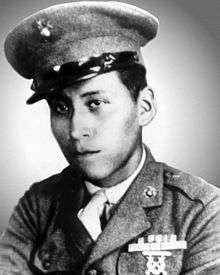
The Ho-Chunk Nation owns and operates several casinos, Ho-Chunk Gaming, in Black River Falls, Baraboo, Madison, Nekoosa, Tomah, and Wittenberg, Wisconsin.[17] They also own numerous restaurants and hotels connected to the casinos, as well as numerous gas stations. The Ho-Chunk Nation is the largest employer in Jackson and Sauk, employing roughly 3100 people.[5]
History
The Ho-Chunk Wazijahaci have an extensive oral history and tradition that dates back thousands of years. There are stories that mention living through three ages. When Jean Nicolet landed in 1634 he thought he was landing in China. Oral history suggests some of the tribe may have been forcibly relocated up 13 times by the US federal government to steal land, which is estimated at 30 million acres in Wisconsin alone. In the 1870s, a majority of the tribe returned to their homelands in Wisconsin. Under the Homestead Act, some tribal members gained title to 40-acre (16 ha) parcels of land.[3]
Notable tribal members
- Glory of the Morning (died c. 1832), tribal leader
- Truman Lowe (b. 1944), artist, curator, professor
- Mitchell Red Cloud Jr. (1924–1950), US Marine, decorated veteran of the Korean War
- Bronson Koenig (b. 1994), point guard, University of Wisconsin Badgers basketball team
- Harry Whitehorse (1927-2017), US Sailor, veteran of WWII, artist
- Sharice Davids (b. 1980), member of House of Representatives from Kansas' 3rd Congressional District
- Sky Hopinka (b. 1984), artist and film-maker
- Dr. Helen Miner Miller (b.1925), educator, first tribal chair
See also
- Ho-Chunk religion
References
Footnotes
- Division of Intergovernmental Relations (July 2016). Tribes of Wisconsin (PDF). Madison: Wisconsin Department of Administration. p. 44. Retrieved October 9, 2016.
- "Ho-Chunk". Ethnologue. Retrieved September 5, 2013.
- Pritzker (2000), p. 475.
- https://www.wpm.edu/index.php/plan-visit/educators/wirp/nations/ho-chunk .
- "Ho-Chunk Nation". Retrieved July 6, 2020.
- Pritzker (2000), p. 477.
- "Tribal Directory". National Congress of American Indians. Retrieved September 5, 2013.
- "The Office of the President". Ho-Chunk Nation. Archived from the original on July 7, 2016. Retrieved June 26, 2016.
- "Legislators". Ho-Chunk Nation. Retrieved July 6, 2020.
- "Supreme Court". Ho-Chunk Nation. Retrieved July 6, 2020.
- "Ho-Chunk | Milwaukee Public Museum". www.mpm.edu. Retrieved November 20, 2019.
- "Ho-Chunk | Overview, Culture, History, & Facts". Encyclopedia Britannica. Retrieved November 20, 2019.
- Kindscher, Kelly; Hurlburt, Dana P. (October 1998). "Huron Smith's ethnobotany of the Hocąk (Winnebago)". Economic Botany. 52 (4): 352–372. doi:10.1007/bf02862065. ISSN 0013-0001.
- Radin, Paul. "The Autobiography of a Winnebago Indian," American Archaeology and Ethnology 16.7 (1920): 381-473
- "Winnebago History and Culture". www.nanations.com. Archived from the original on 16 February 2017.
- https://www.hoocak.org
- "Wisconsin Indian Casinos by Tribe". 500 Nations. Retrieved September 5, 2013.
Works cited
- Pritzker, Barry M. (2000). A Native American Encyclopedia: History, Culture, and Peoples. Oxford: Oxford University Press. ISBN 978-0-19-513877-1.
Further reading
- Jones, Tom; et al. (2011). People of the Big Voice: Photographs of Ho-Chunk Families by Charles Van Schaick, 1879–1942. Madison: Wisconsin Historical Society Press. ISBN 978-0870204760.
